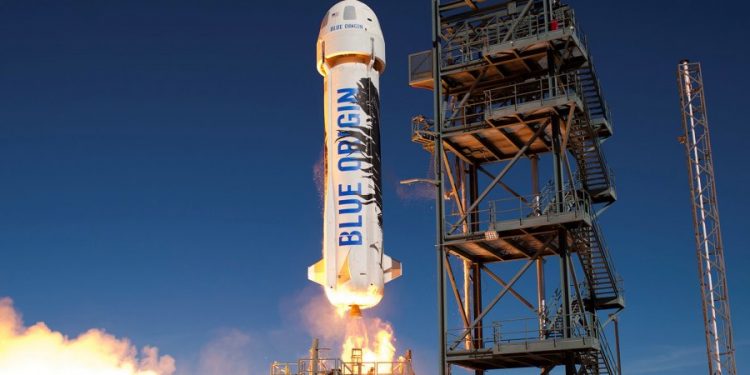Washington: Amazon chief Jeff Bezos-owned Blue Origin’s rocket successfully completed its 10th uncrewed test flight, bringing NASA-sponsored payloads into sub-orbital space for a few minutes of microgravity testing.
The rocket, called New Shepard, was launched at 10.05 EST from Van Horn, Texas Wednesday, sending a capsule to heights above 100 kilometres, crossing the space frontier, Xinhua news agency reported.
New Shepard, named after Alan Shepard – the first American to reach space, consists of a reusable rocket and a reusable capsule and is designed for space tourism flights.
It carried at least eight NASA-sponsored research and technology payloads to sub-orbital space and back.
The mission, which lasted 10 minutes and 15 seconds, reached an altitude of 66 miles (107 kilometres).
“At NASA, technology drives exploration,” NASA chief Jim Bridenstine was quoted as saying by Space.com.
He added that there were 10 payloads in all on the flight.
“These NASA-supported experiments will help advance in-space propulsion technologies habitation systems, science instruments and other capabilities crucial for exploration. Like the researchers, I’m excited to learn the results from this very important flight,” Bridenstine said.
The test flight also indicated that Blue Origin is eyeing a closer launch into sub-orbital space tourism market.
“So exciting to think that human spaceflight is just around the corner (for Blue Origin),” Ariane Cornell, the company’s director of astronaut and orbital sales, was quoted as saying.
“We’re aiming for the end of this year… but as we have said before, we are not in a rush. We want to take our time, we want to do this right.”
Blue Origin is also competing directly with Richard Branson’s Virgin Galactic and Elon Musk’s SpaceX in the sub-orbital space tourism market.
Neither Blue Origin nor Virgin Galactic has begun flying customers but they both have plans to start sometime in 2019.
Virgin Galactic, which plans to use a rocket-powered plane to fly groups of people to the edge of space, conducted its first test flight to reach more than 50 miles above Earth in December, earning commercial astronaut wings for the two pilots aboard the plane, according to a CNN report.
IANS






































